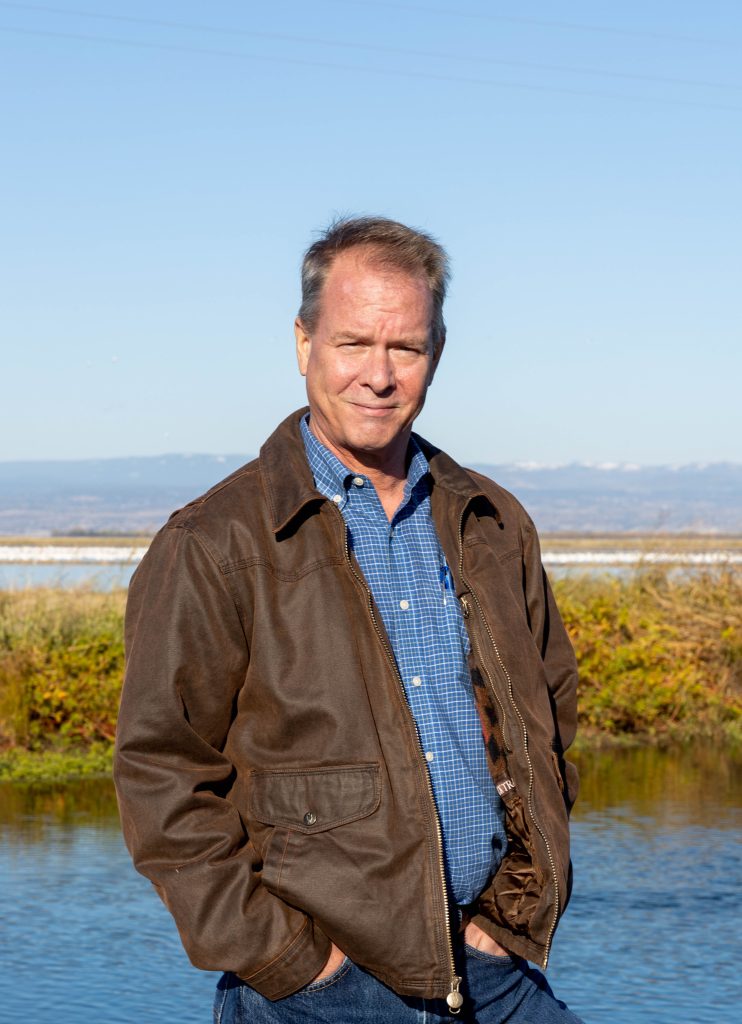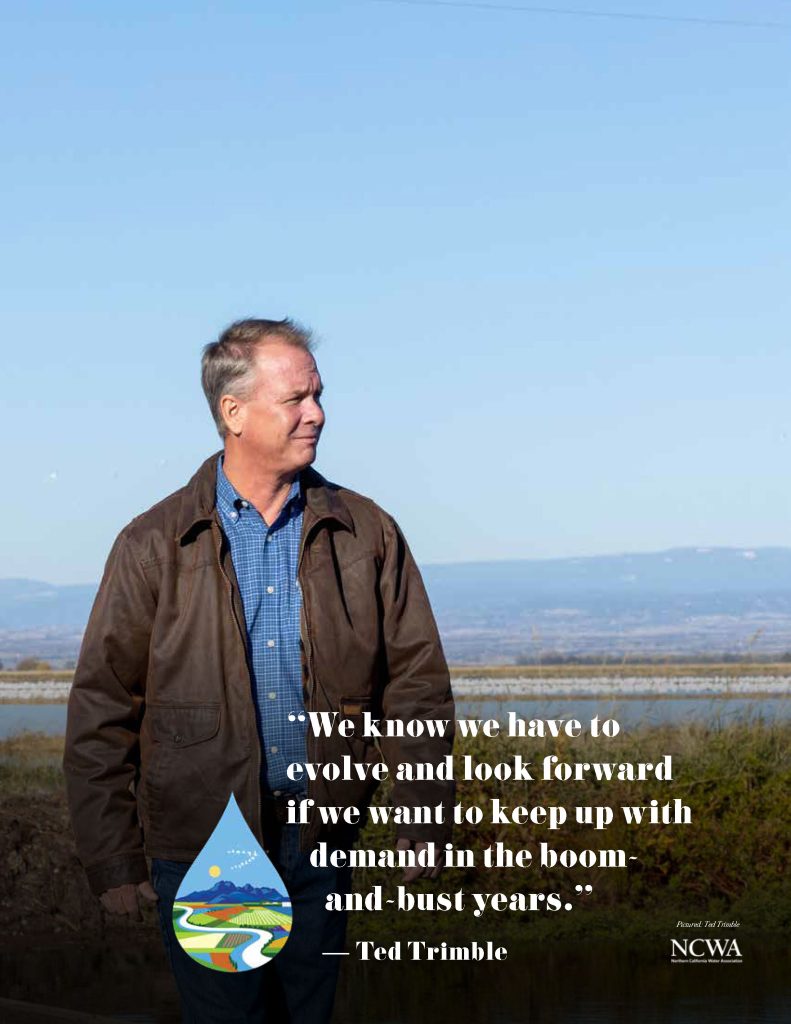
He nearly called balls and strikes for a living, but thankfully for the Chinook salmon, he chose to count fish instead. Ted Trimble was on his way to becoming a baseball umpire before he decided to stick with his job as waterman in a small community south of Chico.
He had a family friend who suggested working for the Western Canal Water District and in the first couple of years, Ted felt like he had made the wrong move. He loved baseball as much as anything growing up and umpiring school in Florida seemed like his next big move. But something was happening along Butte Creek and Ted didn’t want to miss out on what he thought could be an opportunity of a lifetime.
 “The general manager at the time asked me to take on the district’s special projects. Some dams were set to come down in Butte Creek, I knew it was something I wanted to work on for the district,” says Trimble who now serves as General Manager.
“The general manager at the time asked me to take on the district’s special projects. Some dams were set to come down in Butte Creek, I knew it was something I wanted to work on for the district,” says Trimble who now serves as General Manager.
A background in physical and natural sciences with a specialty in hydrology, Ted rediscovered why he had come to Butte County in the first place. It was 1997 and the removal of four old dams along the creek had just begun. Western Canal, the US Department of Interior, California Urban Water Agencies, state fish and wildlife, and other private contractors came together to help create a system that would still allow for irrigation to farms, but also create unimpaired access for salmon making their way to spawning sites upstream.
“At the time it was the most significant fisheries project in the country. It led to the restoration of 25 miles of Butte Creek to benefit spring-run salmon.”
This collaborative effort featuring farmers, water managers, government agencies and conservation groups proved that wildlife protection projects were not only possible on this scale, but ultimately could reverse course for endangered species.
Within one season of the dams coming down, spring-run salmon totals went from less than 200 fish a year returning to spawn, to more than 10,000. By the early 2000s when fish screen diversions and ladders were built, between 16,000 and 18,000 fish began to return to Butte Creek.
“Before the restoration project, everyone seemed to be at odds with another. Farmers, environmentalists and government agencies all had different priorities and ways to best manage water. This effort brought us all together. We walked along the fields and creek together, rather than into a courtroom against one another. We each had a financial stake and now the results speak for themselves.”
The project has become a model not only for the Sacramento Valley but worldwide, in 2022 a film by Kit Tyler appeared on PBS showcasing the dramatic results.
Western Canal and Ted Trimble are not done yet. The district, which is responsible for irrigating 60,000 acres of land and delivering water to some of the leading rice growers in the state, is also busy working to maintain historic healthy groundwater levels. It is part of the district’s approach to ensuring each water drop provides multiple benefits. The water that is used to grow crops in the spring and summer is now being used to provide bird habitat in the fall and then groundwater recharge in the winter.
“We are in the midst of modernizing our entire system. We know we have to evolve and look forward if we want to keep up with demand in the boom-and-bust years we’re experiencing.”
Droughts and the increase of atmospheric river-like storms are rewriting the rules for water management in the state of California. That means for managers like Ted, collaborative projects will likely become the new normal when it comes to water delivery, storage and usage in the Sacramento Valley.
“Working with all of the fellow water managers in the valley is one of my greatest joys. Never before has our industry been tasked to do more than deliver water or provide power. Now we have a responsibility to people and wildlife to ensure both can thrive well into the future.”
His days of playing sports taught Ted how to be a team player which is helpful in navigating complex partnerships. Baseball has also given him the confidence to know even when the count is against you, there is always a chance of making a dramatic comeback. He sees that with the salmon.
“They may be down, but there is hope on the horizon, projects like Butte Creek show us what we can do even when the odds are against us. We just need to stick together and focus on the ultimate goal.”
Click below for more details.
Like a human fingerprint, California’s Sacramento Valley is truly unique. On the leading edge of ecological and economical sustainability, it’s also an exceptional place to live, work and raise a family. The Sacramento Valley joins together a world-renowned mosaic of natural abundance: productive farmlands, wildlife refuges and managed wetlands, cities and rural communities, and meandering rivers that support and feed fisheries and natural habitats. Through efficient management of the region’s water resources, the Sacramento Valley will continue to provide what’s essential to California’s future success and prosperity. Nourishment and sustenance from the fields, habitats for fish and wildlife, recreation and a special quality of life—the Sacramento Valley is home to all of this, and more.




